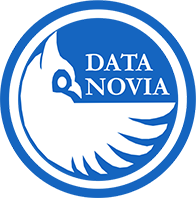Introduction
Programming is the art and science of instructing computers to perform tasks, solve problems, and create innovative solutions. In this article, we explore the core concepts of programming, its evolution over time, and its transformative impact on technology and society. Whether you are a beginner eager to learn the basics or a curious mind interested in the history and future of coding, this guide will lay the foundation for your programming journey.
What is Programming?
At its simplest, programming is the process of writing code—sets of instructions—that a computer can understand and execute. These instructions are written in programming languages such as Python, R, JavaScript, or C++, and are used to create software applications, websites, and automated systems. Programming involves designing algorithms, solving problems logically, and implementing solutions that can be run by machines.
The Purpose of Programming
Programming empowers us to automate repetitive tasks, analyze complex data, and build tools that improve our daily lives. It transforms abstract ideas into tangible applications by:
- Automating Tasks: Replacing manual processes with efficient, automated solutions.
- Solving Problems: Using algorithms to tackle challenges in various fields—from healthcare to finance.
- Innovating: Enabling the development of new products, services, and technologies that drive progress.
A Brief History of Programming
The history of programming spans several decades, beginning with the earliest computers that used machine language—a series of binary code—to perform calculations. Over time, assembly languages and high-level languages emerged, making programming more accessible and powerful. Milestones such as the development of structured programming, object-oriented paradigms, and the rise of languages like Python and R have shaped today’s dynamic and versatile coding landscape.
The Impact of Programming on Society
Programming has revolutionized industries and transformed the way we live and work. From the development of the Internet and mobile applications to breakthroughs in artificial intelligence and data science, the ability to program has become a crucial skill. It drives innovation, improves efficiency, and opens up countless career opportunities in a world increasingly powered by technology.
Real-World Applications
Programming is at the heart of many modern technologies and everyday applications, including:
- Web Development: Creating interactive websites and applications.
- Data Science: Analyzing and visualizing data to derive actionable insights.
- Mobile Apps: Developing applications for smartphones and tablets.
- Automation: Streamlining processes in industries such as manufacturing, finance, and healthcare.
- Game Development: Designing and building engaging digital experiences.
Conclusion
Understanding what programming is and its far-reaching implications is the first step toward becoming a proficient coder. As you continue your learning journey, you’ll dive deeper into practical tutorials and real-world projects that build on these foundational concepts.
References / Further Reading
Happy learning, and welcome to the world of programming!
Explore More Articles
Here are more articles from the same category to help you dive deeper into the topic.
Reuse
Citation
@online{kassambara2024,
author = {Kassambara, Alboukadel},
title = {What Is {Programming?} {A} {Comprehensive} {Introduction}},
date = {2024-02-01},
url = {https://www.datanovia.com/learn/programming/introduction/what-is-programming.html},
langid = {en}
}
